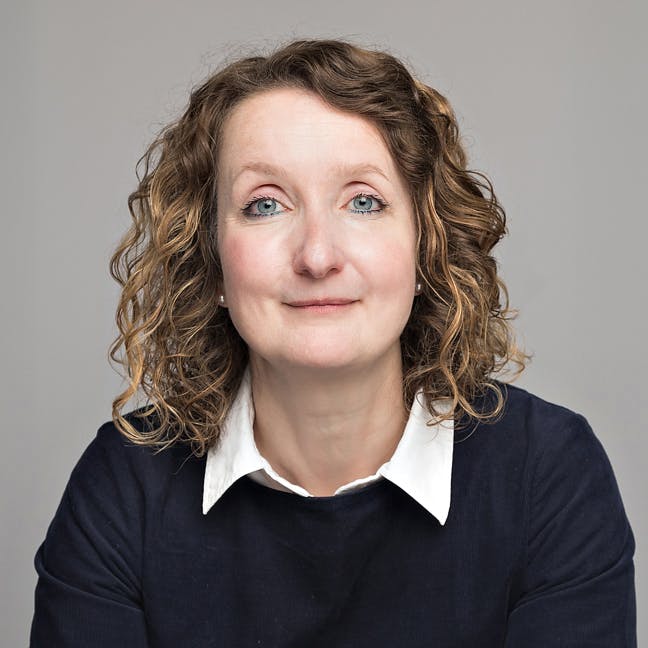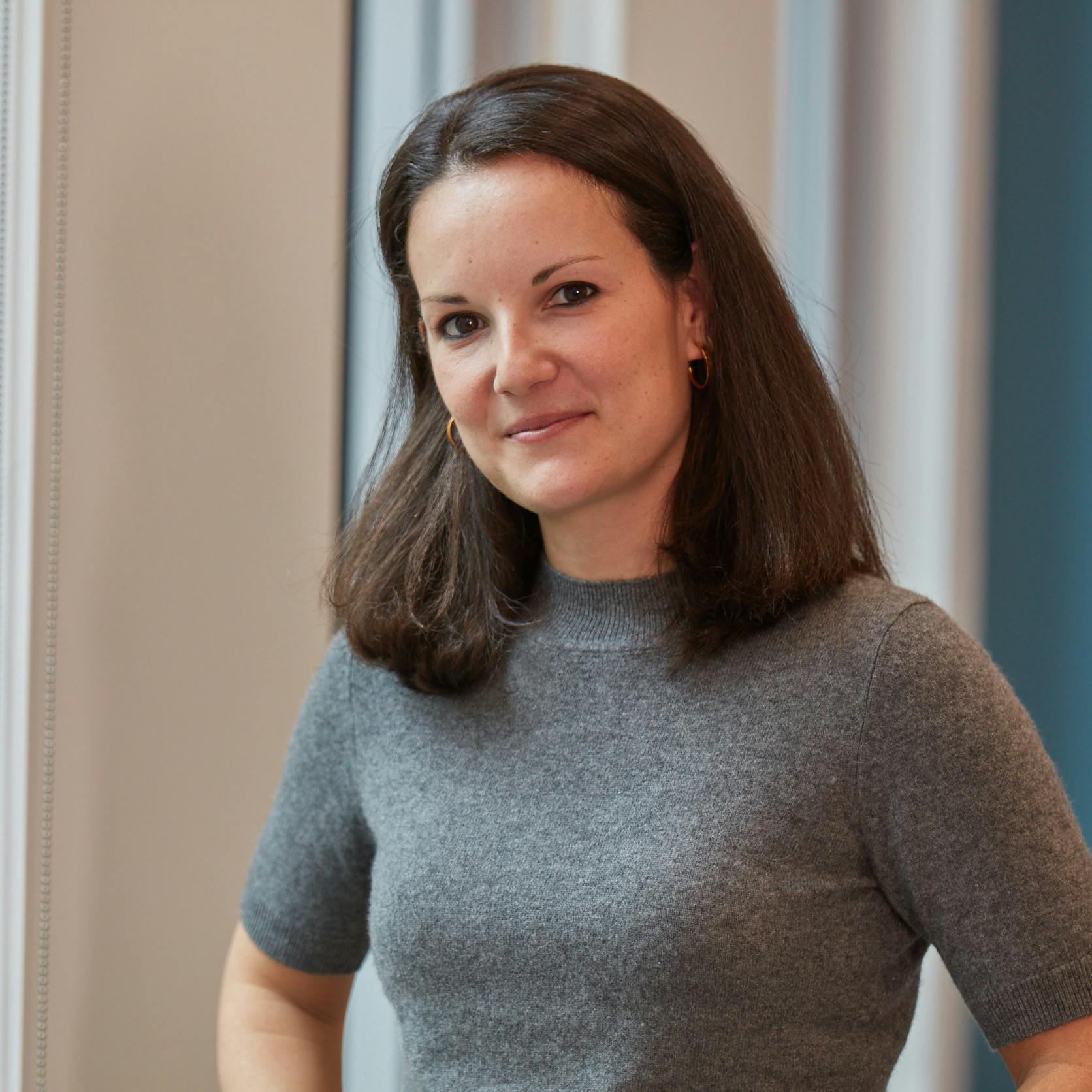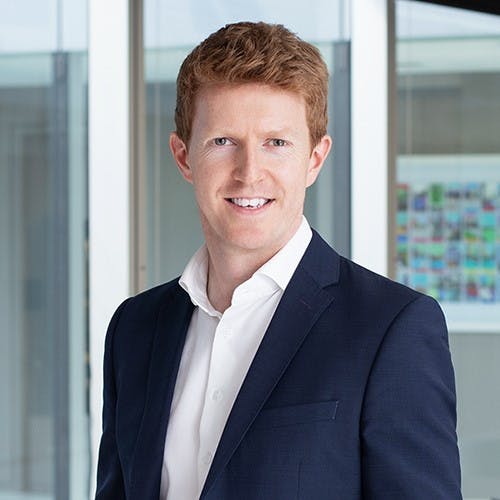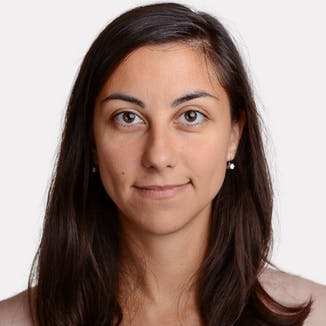Empty dropdown
Notes:VC and LP respondents only. Respondents who selected "I don’t feel sufficiently informed to comment" are excluded from the data.
While the majority of LPs reported an intention to maintain their allocations across all asset classes, 35% plan to increase their allocation to VC next year - the most of any asset class.
VCs and LPs agree that navigating a tougher fundraising environment will be a real challenge over the next 12 months. They are also both concerned about the impact of a muted exit landscape.
In 2022, just 0.010% of pension fund AUM was invested into European VCs, in line with the average of the last five years. The scale of European pension funds means even a small increase in their share of AUM dedicated to VC would transform the ecosystem.
As the ultimate source of capital that flows downstream via VCs to startups, Limited Partners (LPs) play a critical role in the healthy functioning and success of the European tech ecosystem. The scale and predictability of capital flowing from LPs is itself shaped by the appetite and willingness of these institutional investors to allocate to the venture asset class on a consistent basis. As a result, LP sentiment is a crucial barometer to understand current and future appetite to invest.
This year's survey highlights a notable jump in the share of LP respondents who reported a decreased appetite to invest in the European venture asset class compared to prior surveys - rising to 20% from 8% last year and just 2% in 2021.
In comparison, just 18% of LP respondents reported an increased appetite, while the majority 62% reported no change in appetite. This likely reflects the fact that many LPs understand the importance of investing consistently through all stages of the cycle and the fact that, perhaps counterintuitively, a market downturn may actually represent a more attractive phase to allocate to the asset class.
What really stands out, however, is the huge gulf in perception between LPs and VCs. As many as 71% of VC respondents to the survey stated that they have noticed a decreased appetite from LPs compared to 12 months ago, clearly reflecting the strong perception that there are challenging fundraising conditions. This represents an almost doubling in VC respondents highlighting decreased LP appetite since last year's survey and is more than 3x higher than the responses shared by LPs themselves.
It's sometimes said that VCs and LPs speak different languages, and are therefore not always aligned in the way they think or act. This mismatch in expectations is highlighted by a stark gap in the perception of VCs and LPs when asked to comment on the challenges faced by LPs in relation to their venture capital investments.
VC respondents were mostly likely to cite reduced risk appetite (58%), liquidity issues / lack of distributions (51%), and reallocation / increased focus on other asset classes (40%) as the perceived challenges. In contrast, while liquidity issues also ranked second amongst LP respondents (29%), the challenges posed by faster than expected fund re-up cycles (33%) and product proliferation by GPs (24%) were far more likely to be cited by LPs.
Interestingly, large perception gaps are visible across almost every possible perceived challenge and highlight a potential lack of understanding when it comes to the actual challenges faced by LPs.


VC fundraising remains therefore challenging, with fund closing times continuing to lengthen this year. However, there are signs the market could be on track for a stronger performance in 2024. Similar to the Private Equity Market, which has seen significantly more capital going into the hands of the biggest funds, LPs have shifted their focus in the VC space towards top managers. There has also been increased LP led activity for secondary transactions in the Private Equity Market, indicating we may be closer to market clearance - and providing much needed liquidity among LPs.
Interestingly, there is much closer alignment in the perception of VCs and LPs when asked about the greatest potential challenges likely to be experienced by VC GPs over the next 12 months. There is clear agreement on the difficulties of navigating the fundraising environment and the impact of a muted exit landscape on finding liquidity and realising distributions back to LPs.
The most notable areas of divergence of perception here relate to follow-on capital management and the competitive landscape for investment. LP respondents ranked the challenge of follow-on capital management much higher than VC respondents, while VC respondents were much more likely to perceive competition as a challenge than LPs. This divergence reflects LP placing increased focus and value on investment discipline and experience of fund management through full market cycles.
Despite market headwinds, 2022 represented a record-breaking year for European VCs with funds raised in the year exceeding $24B, driven by an expansion of fundraising by both early stage and later-stage fund managers.
This year, however, looks set to record a meaningful year-on-year decline in total funds raised, with the first half of the year having recorded just $7.4B raised. The decrease in fundraising volumes during the first six months of the year is visible across all stages of investment focus. This lower number, however, should be framed within a longer-term perspective. Only a decade ago, European VCs raised just $5.1 billion for the full year of 2014.
There has been a lot of discussion about the impact of a challenging fundraising environment on first-time fund managers. Despite the fact that conditions had clearly already shifted in 2022, there was an all-time record high in terms of funds raised by first-time European VC managers, while the number of funds closed also approached the record level of 2021.
This year, however, shows a clear reversal of these record numbers. In the first half of 2023, only 29 first-time European VC funds reached a closing for a total of less than $1B in aggregate funds raised. Based on the level of activity seen year to date, it's clear that the full-year total will fall well short of recent highs, and looks set to drop back to levels last seen in pre-Covid years.
The changing investment environment means that LPs have to review their portfolios and allocation targets to consider potential adjustments across all asset classes, not just VC. In this year's survey, the majority of LPs reported an intention to maintain their allocations across all asset classes.
Looking at responses for venture capital specifically, more LP respondents stated an intention to increase their allocation (35%) over the next 12 months compared to any other asset class. For comparison, 22% of LP respondents reported an intention to increase allocation to Credit, and 20% reported a planned increase for Private Equity.
Interestingly, however, 15% of LP respondents stated an intention to decrease allocation to venture capital over the next 12 months, which was the third-highest share of respondents, after cash (20%) and real estate (26%).

They have taken significant write downs where appropriate and focused their portfolio companies on reducing burn and extending their cash runways. That said, there are a lot of companies waiting on the side-lines, reluctant to raise capital until they have to, that will have to come back to market next year. Fundraising is likely to remain a challenge for all but the most high-profile venture-backed companies over the next 6-12 months, and so continued portfolio management is paramount.
A muted exit landscape has exacerbated an existing market need for a greater variety of liquidity solutions for early investors and employees. Alongside the emergence of secondary marketplaces such as Forge Global's Forge Europe to facilitate transactions between buyers and sellers of private shareholdings in technology companies, the market need is also starting to be addressed by a small but growing number of dedicated European secondary funds with a specialist focus on high-growth, private European technology companies.
The decline in the count of funds closed is visible across almost all fund size categories, especially for those with smaller fund sizes. In the first half of 2023, for example, just six funds sized under €25M have been closed, compared to around 40 per full year in the two preceding years. Similarly, just six funds size between €50-100M closed in the first six months of 2023, compared to 25 during the full year 2022.
The one exception visible in the trend by fund size is for the largest fund size category, meaning funds closed in excess of €500M. Based on the rate of fund closes in H1 2023, this category is on track to exceed 2022's total and to match the record of any prior year.
This speaks to the fact that European VC is now seeing a growing number of funds scaling up to capture the dramatically increased European tech opportunity. It is an interesting contrast to a trend in the US of its largest-scale managers choosing - or needing - to downsize fund targets to take into account the shifts in the macro context. Of course, US funds scaled much bigger, much faster, and so the trend is indicative of regionally-specific trends.
2021 and early 2022 saw record-breaking investment levels, fuelled in no small part by investors significantly accelerating their pace of investment and compressing fund deployment cycles. Last year’s edition of the State of European Tech predicted a reversal of this trend starting in 2023, and this is now beginning to be reflected in the data.
Last year, the median time between VCs returning to market and closing their next funds had shrunk to record lows in both Europe and the US. In the US, this number had fallen as low as a median fund cycle length of just 1.5 years, a remarkable divergence from the long-run US average of 2.5 years. In Europe, meanwhile, this number fell to a new low of 2.7 years in 2022, compared to the long-term average of 3.4 years.
This year, however, shows that the time between funds in the US has started to elongate again, extending to two years, while in Europe the numbers appear to be delayed in reflecting the impact, and have yet to increase as visibly as in the US.
The evidence of a more challenging fundraising environment is also visible elsewhere. One clear example is in looking at the average time taken between first and final fund closes, as well as the average percentage of target fund size achieved by fund managers at final close.
Since 2021, there has been clear evidence of fundraising timelines elongating significantly between first and final closes. In fact, between 2020 and 2022, this number has increased by more than 50% from an average of eight months to more than a year. Meanwhile, after rising consistently for almost a decade, the average share of target size achieved at final close by fund managers declined for the first time in 2022 - a trend 2023 has so far managed to counter.
The length of a fund's deployment cycle is intrinsically linked to the overall pace of investment in the market. In turn, the faster a fund is invested, the sooner the fund manager has to return to LPs in order to raise again. The overall scale of investment activity is also a function of the size of funds raised. Assuming a consistent strategy in terms of typical initial cheque sizes, the bigger the fund, the greater the number of expected investments.
The impact of bigger funds and shorter fund cycles is neatly captured when looking at the volume of investment activity across a consistent cohort of more than 100 funds actively investing in European tech over the past decade. At the early stage, there was a consistent increase in new investment volume, culminating in a dramatic increase in investment pace between Q1 2022 and Q2 2022. But the subsequent deceleration since then is just as stark. At the growth stage, the same trend is repeated, albeit with the expected lower relative volume of activity.
Not surprisingly, a reset in the macro and fundraising environment is causing VCs to sharpen their focus and reprioritise firm-level strategies and initiatives.
Consistent with last year's survey, the importance of building a stronger network was the top-ranked response in terms of areas that have been given an increased priority over the past 12 months (cited by 65% of VC respondents). This, of course, reflects the importance of relationships in a heavily people-centric industry.
The biggest shift is an increased priority given to fund marketing activities (cited by 53% of VC respondents), a logical reflection of the need to stand out amid a very tough and competitive fundraising landscape. The increased priority on developing investment focus specialism (cited by 51% of VC respondents) is also aligned with the need to have a clearly differentiated value proposition.
The industry's increased focus on ESG, in part driven by greater pressure from LPs, is also evident in the significant increase in the number of VC respondents (52%) saying this has been given a greater priority over the past 12 months. In last year's survey, this number stood at just 28% of VC respondents.
Another notable change compared to last year's survey is a significant increase in the percentage of VC respondents that cited an increased priority to invest in their fund's data and tech stack. This year, 47% of VC respondents said this had been an increased priority, compared to just 23% of respondents in 2022.
The areas most likely to have experienced a decreased priority over the past 12 months related to scaling headcount, in respect to both the investment (cited by 19% of VC respondents) and non-investment (cited by 22% of VC respondents) teams.

From the increasingly robust EU regulatory landscape to shifting consumer behaviours, prioritising the different areas of ESG is a trend that is very pronounced in Europe. I believe this will pave the way for large future companies to be established, which will pioneer innovation in software & tech whilst also driving positive change.
As highlighted by survey respondents, distributions are top of mind for both VCs and LPs. The key metric to assess this is DPI, a measure of distribution to paid-in capital, i.e., the multiple of capital returned to investors relative to their initial commitment size.
On average, VC funds take up to a decade to return the initial investment to LPs (i.e. hit a DPI of greater than one), while further distributions continue to follow in subsequent years. A comparison of European vs. US funds highlights an interesting divergence in the time to DPI, but over time shows that European funds closely align to, and in some cases exceed, US benchmarks. The divergence in time to initial DPI across both regions is likely a function of the maturity of the exit landscapes.

Whilst this has been a painful reality for certain parts of the ecosystem, this dynamic doesn’t appear to have impacted UK VCT funds (who represent c.10% of UK investment activity). UK VCT funds are continuing to raise capital and invest in line with prior years.
As expected, the market reset is mirrored in the short-term performance of venture capital. One-year VC returns are now well into negative territory in both Europe and the US as a consequence of increased down rounds, write-offs, and markdowns.
In VC, however, what matters is the long-term perspective, given that returns take 10 years or more to be realised.
In this regard, European VCs have consistently delivered outperformance over two decades, at least matching or, in most cases, beating benchmarks from US VCs, European buyout, and public equities.

By putting leading global resources to work with local boots on the ground we hope to fuel sustainable and technologically enabled growth. In backing truly visionary founders, and activating the established industrial ecosystem to create groundbreaking companies, we aim to help build towards European sovereignty and resilience.
The maturing of Europe's investor landscape is characterised by a small, but growing number of large-scale VC fund managers based in the region. This year, several of these managers defied challenging fundraising conditions to close on significantly-sized vehicles. This includes three funds that closed in excess of $1B, including Generation Investment Management spin-off Just Climate's $1.5 billion 'Climate Assets Fund', the $1.1B NATO Innovation Fund, and Highland Europe's Technology Growth V fund of just over $1B.
| Name | Size of Fund ($M) | Fund Name | Fund Location | |
|---|---|---|---|---|
| 1 | Generation Investment Management | 1,500 | Climate Assets Fund I | London, United Kingdom |
| 2 | NATO Innovation Fund | 1,107 | NATO Innovation Fund | Amsterdam, Netherlands |
| 3 | Highland Europe | 1,070 | Highland Europe Technology Growth V | London, United Kingdom |
| 4 | HV Capital | 770 | HV Capital Fund IX Growth | Munich, Germany |
| 5 | Dawn Capital | 620 | Dawn Capital V | London, United Kingdom |
| 6 | High-Tech Gründerfonds | 529 | High-Tech Gründerfonds IV | Bonn, Germany |
| 7 | Eurazeo | 435 | Eurazeo Smart City Fund II | Paris, France |
| 8 | Hedosophia | 356 | Hedosophia Partners V | London, United Kingdom |
| 9 | Notion | 326 | Notion Capital V | London, United Kingdom |
| 10 | Hitachi Ventures | 300 | Hitachi Ventures Fund III | Munich, Germany |

With prominent and sophisticated local capital, a growing and maturing entrepreneur base and increasing signs of the deep network effect from European tech success stories, 2024 promises to be a year in which European tech can “kick on” even stronger and truly shape the future.
As it does in every major venture ecosystem, government funding plays an important role in Europe too. National and regional initiatives, such as the European Investment Fund, British Patient Capital, KFW Capital, and bpifrance, are amongst the most active LPs in the European tech ecosystem. While new initiatives, such as the European Tech Champions Initiative (ETCI) will going forward play an important role in improving access to growth capital at scale.
These agencies have consistently backed local fund managers with billions of dollars of capital each year. Contrary to perception, however, the scale of annual investment has not grown materially over the past five years. In fact, in 2022, government backing actually declined again compared to 2021 and the peak year of 2020.
But as more and more private institutional investors commit to the European venture asset class, the relative share of funds sourced from governments continues to decline rapidly as a percentage of total funds raised by European fund managers. This hit a record low of 11% of total funds raised in 2022, down from more than 16% in each year between 2018 and 2020.
Considering their scale, European pension funds have historically punched well below their weight as investors in the region's entrepreneurial and growth ecosystem. As the State of European Tech has called out over the years, when comparing the total assets under management (AUM) of European pension funds, the share from this dedicated to the venture asset class is minuscule.
In 2022, just 0.010% of pension fund AUM was invested into European VCs, in line with the average of the last five years. This is based on the reported assets of European pension funds, standing at $7.8 trillion.
Positively, there has been a small number of notable developments across Europe this year. The UK government, for example, added flexibility earlier this year on a fee cap previously limiting pension funds to invest in VC funds. Furthermore, in October, the Venture Capital Investment Compact was signed by a number of leading UK and European venture firms pledging to work in collaboration with UK pension funds and insurers, with the goal of allocating increased capital to VC in order to support the growth of the UK economy. In Germany, meanwhile, the Ministry of Economy and Climate is in discussions to increase the commitment of German pension funds and insurers to invest in VC. France launched the successor to its Tibi initiative, Tibi 2, to attract up to €7 billion of institutional capital into early stage, deep tech and cleantech investments.
The scale of European pension funds means even a small increase in their share of AUM dedicated to VC would translate into significant volumes of investment flowing into the European tech ecosystem.
To better understand industry sentiment on the question of unlocking capital at scale for the European tech ecosystem, survey respondents were asked to share their perspective on whether European institutional investors should increase or decrease their allocation to venture capital. The response was, unsurprisingly, overwhelmingly skewed in support of increased allocation (76% of respondents), including a large share of respondents that felt that the increase should be significant (36% of respondents).
It's easy to challenge the premise of the question. Of course, most respondents are likely to be in favour of an increase in support. But what stood out to us is the strength and consistency of support across all stakeholder groups, from VCs (surprise!), to policymakers, to LPs themselves. Even 66% of those survey respondents working outside of the tech sector perceived the need for increased allocation to venture capital.
The survey results register a strong call to action.

The increased interest has primarily been absorbed by US GPs that have raised larger funds and increased their allocation to Europe or have established a local presence. This has been driven by a number of factors that investors take into account when adding new manager relationships including currency, denominator and numerator considerations, macroeconomic and geopolitical factors and limited dynamism by local managers.
While strong advocates for the importance of venture capital, survey respondents recognise that investing in VC comes with complexities. The most commonly cited reasons for pension funds to hold back in their investment levels was perceived to be a lack of relevant experience of investing in the asset class, the relative perceived risk to other asset classes, and regulatory/legislative constraints.
Beyond these challenges, a variety of other perceived barriers were also frequently cited by survey respondents, including institutional governance and approval processes, limited relationships and networks within the space, and the potential bias of entrenched advisor networks.
It's clear that a significant level of knowledge-sharing and education will be needed at an ecosystem level to work in collaboration with institutional investors, policymakers, advisors and other stakeholders in order to address these concerns and remove barriers to allocation at scale.
VCs based in the Nordic countries are the largest beneficiaries of local pension funds' investment activities. Interestingly, the Nordics is also the region in Europe with the highest share of funding raised from non-local pension funds, highlighting the need for a strong base of local LPs in order to attract overseas interest.
Whilst the fundraising environment in Europe has seen a clear shift this year, the levels of dry powder have kept climbing, reflecting continual, elevated levels of fundraising in recent years. Reporting from Invest Europe implies the total dry powder - the amount of committed but unallocated capital venture capitalists have at hand to deploy - has risen to $58B, and to $108B when also including Growth funds. This represents an increase of 14% from $98B in 2022. Fundraising is a slow process, and any shifts in changing market sentiment will only flow through to dry powder figures with a delay. As of today, European venture funds continue to sit on the largest trove of deployable capital that Europe has ever seen.
The knock-on effect of a muted exit landscape is a lack of distributions to LPs, creating the liquidity issues that so many LP survey respondents highlighted as a key challenge.
As a consequence, this has led a significant number of LP respondents to proactively explore alternative liquidity opportunities, such as seeking secondary buyers for positions in their GP portfolio. According to the survey, 35% of respondents have spent time in 2023 exploring these potential opportunities, though only a small number of respondents (6%) have spent significant time on this.
The main drivers of LP portfolio sales include the de-risking of more mature programmes (especially for pension funds), the rebalancing of portfolio allocations, enabling consistent deployment and preserving vintage year diversification by unlocking new commitments, enabling a reallocation away from legacy strategies, and cutting non-core relationships.
of LP respondents state they have spent time seeking liquidity opportunities
As well as asking LPs to comment on their overall appetite to invest in European venture, the survey also asked respondents to specifically state any change in their appetite to add net new managers to expand their portfolio of European VC funds. Almost half of all LP respondents (41%) stated an increased appetite to add new managers, while more than a third reported no change. Just 18% of LP respondents reported a decreased appetite to make commitments to new fund manager relationships.
of LPs stated an increased appetite to add new GPs to their portfolio.